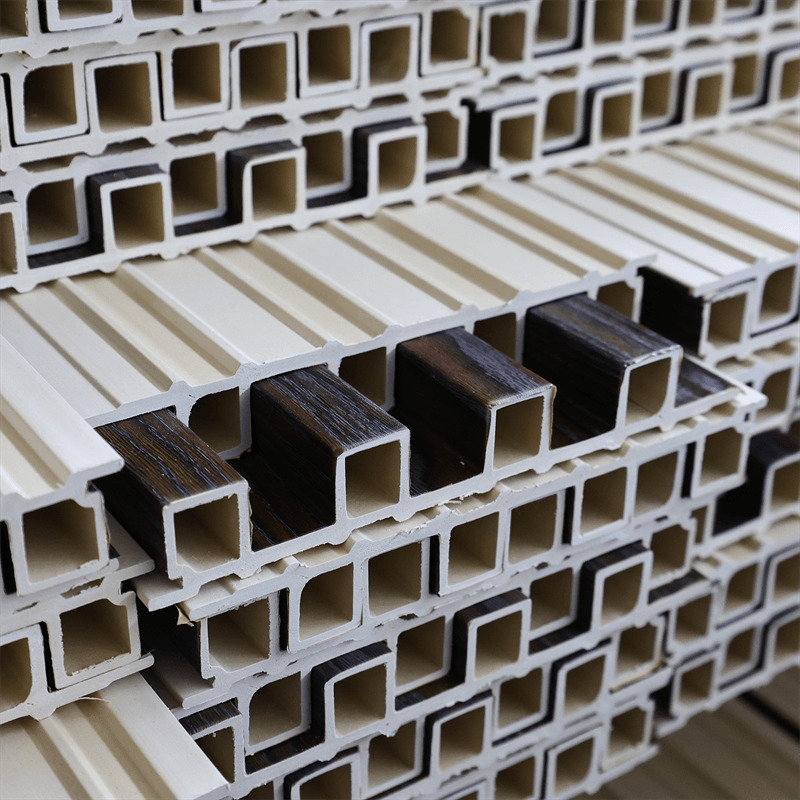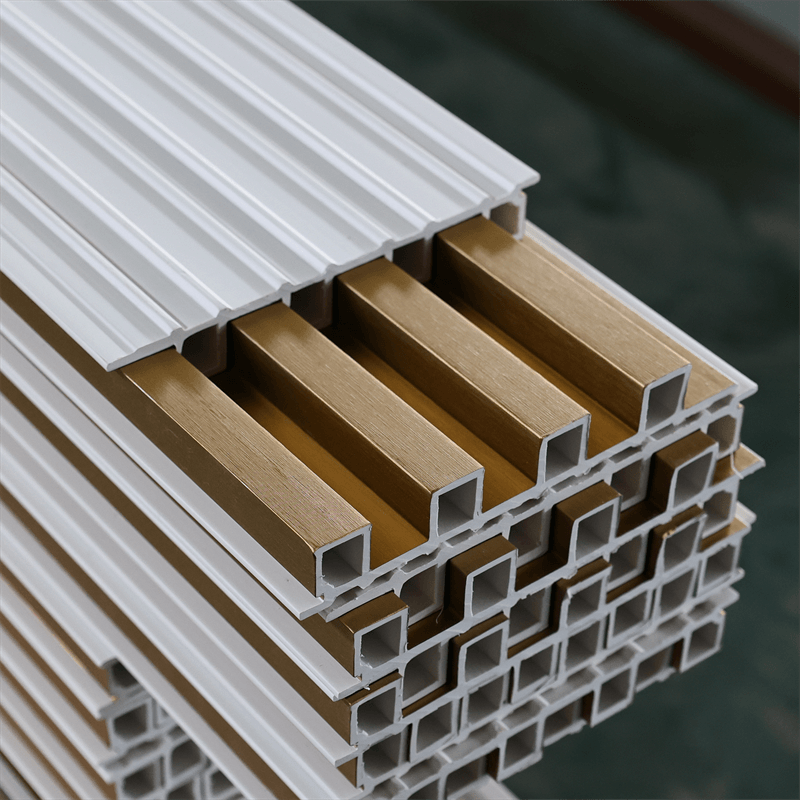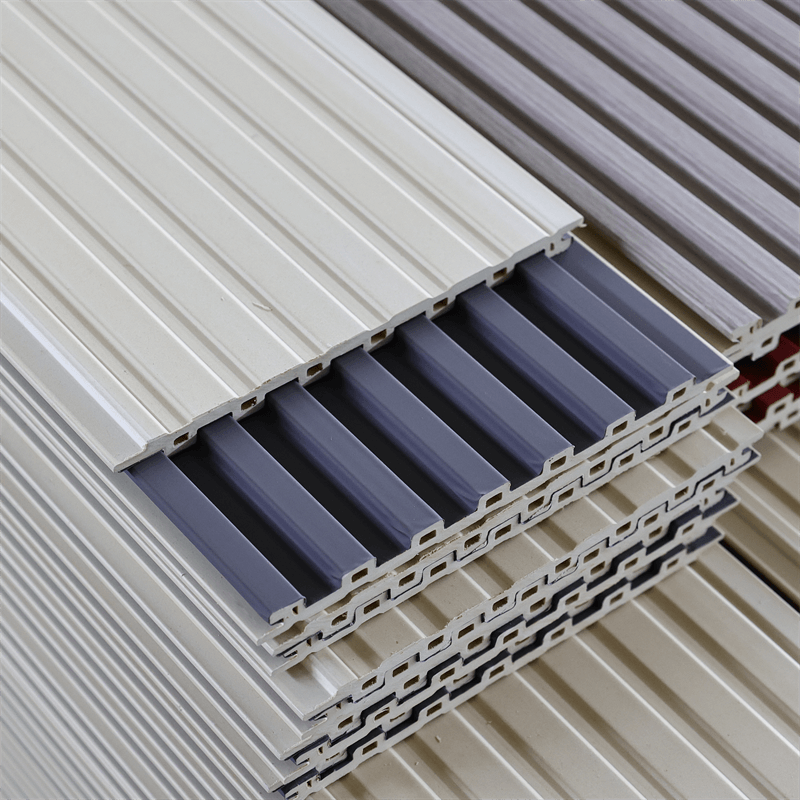In the realm of modern architecture, the demand for sustainable and visually appealing building materials is on the rise.
WPC (Wood-Plastic Composite) wall panels have emerged as a revolutionary solution that combines both style and substance.
This essay explores the numerous benefits of WPC wall panels, ranging from their eco-friendly nature to their exceptional durability and design versatility.
By shedding light on these advantages, we can understand why WPC wall panels have become an increasingly popular choice for architects, builders, and homeowners alike.

I. Sustainable Materials: Protecting the Environment and Preserving Resources:
WPC wall panels are crafted from a blend of wood fibers and recycled plastics, making them an eco-friendly alternative to traditional construction materials.
This section delves into the sustainable aspects of WPC panels, including the use of recycled materials and the reduction in demand for virgin timber.
By opting for WPC wall panels, we actively contribute to the conservation of natural resources and the reduction of waste in landfills.
II. Durability: Building for the Long Term:
Durability is a crucial aspect when considering construction materials, and WPC wall panels excel in this regard.
This section explores the exceptional durability of WPC panels, showcasing their resistance to moisture, rot, insects, and UV radiation.
Unlike traditional wood or non-composite materials, WPC panels maintain their structural integrity over time, requiring minimal maintenance and reducing the need for costly replacements.
Architects and builders can rely on WPC wall panels to deliver long-lasting performance in a variety of environments.
III. Design Versatility: Unleashing Architectural Creativity:
WPC wall panels offer an extensive range of design possibilities, allowing architects and designers to unleash their creativity.
This section highlights the design versatility of WPC panels, showcasing their ability to mimic the appearance of natural wood while offering customizable colors, textures, and patterns.
Whether aiming for a contemporary, rustic, or minimalist aesthetic, WPC wall panels provide the flexibility to achieve the desired look and feel of a space.
IV. Installation Ease and Cost Efficiency: Streamlining the Building Process:
Efficient installation and cost-effectiveness are vital considerations in any construction project.
This section explores how WPC wall panels streamline the building process, thanks to their lightweight nature, standardized dimensions, and ease of installation.
WPC panels can be installed quickly, reducing labor costs and construction time.
Additionally, their long lifespan and low maintenance requirements contribute to cost savings over the life of the building, making them a cost-effective choice for both residential and commercial projects.
Conclusion: WPC wall panels embody the perfect fusion of style and substance in modern architecture.
By opting for these panels, we make a sustainable choice, protecting the environment and conserving resources.
Their exceptional durability ensures long-term performance, reducing maintenance costs and the need for frequent replacements.
The design versatility of WPC panels empowers architects and designers to create stunning spaces that reflect their creative vision.

Moreover, the ease of installation and cost efficiency of WPC wall panels streamline the building process, making them an attractive option for both builders and homeowners.
As the construction industry embraces sustainable practices and strives for aesthetically pleasing yet durable solutions, WPC wall panels stand at the forefront.
Their benefits extend beyond the individual building, contributing to a greener and more resilient built environment.
With their sustainable materials, durability, design versatility, and cost efficiency, WPC wall panels exemplify the concept of building with style and substance,
ensuring that our structures not only capture the eye but also stand the test of time.
In addition to their sustainable materials, durability, design versatility, and cost efficiency, WPC wall panels offer a range of other benefits that make them a compelling choice for construction projects.
One of the notable advantages of WPC wall panels is their excellent thermal and acoustic insulation properties.
The composition of the panels, with the inclusion of wood fibers and polymer materials, provides natural insulation against heat and sound.
This feature not only enhances the comfort of the occupants but also contributes to energy efficiency by reducing the reliance on heating and cooling systems.
Furthermore, WPC wall panels exhibit high resistance to fading, warping, and cracking.
Unlike traditional wood, they are not susceptible to the effects of moisture, changing weather conditions, or pests.
This durability ensures that the panels maintain their aesthetic appeal and structural integrity over the long term, even in challenging environments.
Another significant benefit of WPC wall panels is their resistance to fire.
Due to the inclusion of fire-retardant additives during the manufacturing process, WPC panels offer improved fire performance compared to traditional wood products.
This feature provides an added layer of safety and peace of mind, particularly in buildings where fire resistance is a critical requirement.
Moreover, WPC wall panels are known for their ease of maintenance.
Unlike natural wood, which requires regular staining, sealing, or painting to maintain its appearance, WPC panels can be easily cleaned with mild soap and water.
This low-maintenance characteristic saves time, effort, and resources in the long run, making WPC wall panels a practical choice for busy building owners and homeowners.
Additionally, WPC wall panels contribute to healthier indoor environments.
The absence of formaldehyde and other harmful chemicals in their composition ensures that the panels do not emit volatile organic compounds (VOCs), promoting better air quality.
This aspect is particularly crucial in spaces where occupants spend a significant amount of time, such as homes, schools, and offices.
In conclusion, WPC wall panels offer a multitude of benefits that position them as an attractive choice for architects, builders, and homeowners.
Their sustainable materials, durability, design versatility, ease of installation, cost efficiency, thermal and acoustic insulation properties, fire resistance,
low-maintenance requirements, and contribution to healthy indoor environments make them a valuable addition to the construction industry.
By embracing WPC wall panels, we can create structures that harmonize style and substance, while also prioritizing sustainability, longevity, and the well-being of occupants.
As the demand for environmentally conscious and visually appealing building materials continues to grow,
WPC wall panels pave the way for a more sustainable and aesthetically pleasing future in architecture and construction.

